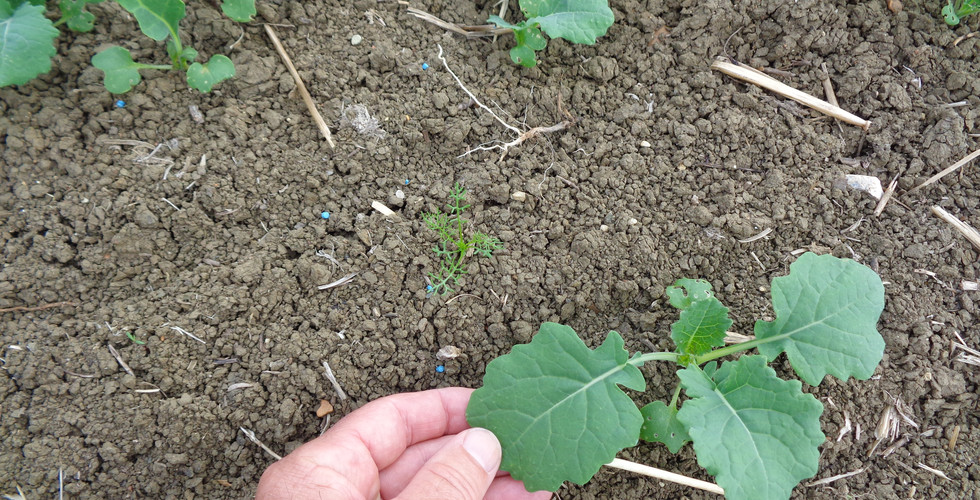Brassica oilseed varieties are some of the oldest plants cultivated by humanity, with documentation dating back some 4,000 years, whereas its use in Northern Europe for oil lamps is documented back to the 13th century.
Rapeseed oil extracts were first put into the food market in 1956 but failed to gain market acceptance.
Canola was bred from rapeseed cultivars of B. napus and B. rapa at the University of Manitoba, Canada, in the early 1970s. Canola became a “trademark” of the Rapeseed Association of Canada; the name is a portmanteau of "can" from Canada and "ola" from "oil".
Canola is now a generic term for edible varieties of rapeseed oil in North America and Australasia; the name serves to distinguish it from natural rapeseed oil containing a much higher erucic acid content.
Similar to all agricultural crops oil seed rape has undergone many “genetic changes” over its long history so why is it that breeders have not developed “pest resistance” to “flea beetle” families? There have been other success stories such as that against Bollworm in Cotton.
Genetically engineered (or Bt) cotton was first approved for field trials in the United States (US) in 1993 and first approved for commercial use in the US in 1995.
However, by 1997 questions were being asked in England as to why there were increased bollworm attacks within these genetically engineered crops in America.
The answer to this I find quite interesting since it highlights sensationalist headlines from the reality faced by some American farmers at this time.
The incidents that took place were in Texas and related to the 1976 crop. They occurred in a relatively localised area which also happened to be the first time that cotton was grown in this location.
In fact, within Texas that year the level of bollworm infestation was already 10 times higher than in any previous year. What happened was, in some isolated areas the plants were literally overwhelmed, even the Bt protein in the plant (its genetic resistance) was not sufficient to provide control under such heavy pressure. Within these areas where farmers were growing non-Bt cotton the impact was even more severe. Chemical insecticides applied during this attacked were not able to control the insects fully.
There was no relationship between the fact that the plants contained the Bt genetic modification and the level of attack. There was no new issue.
It is a fact that pest management is a difficult challenge whether it be oil seed rape or cotton. Pest populations vary from year to year and by location to location no single means of control is going to be 100% effective on its own especially where pest numbers are high.
One could therefore surmise that even with genetic modification of oil seed rape to protect against cabbage stem flea beetle damage that the use of insecticides would still be necessary since damage levels vary with the seasonal circumstances as was the case with the first commercial introduction of pest resistant cotton.













Comments